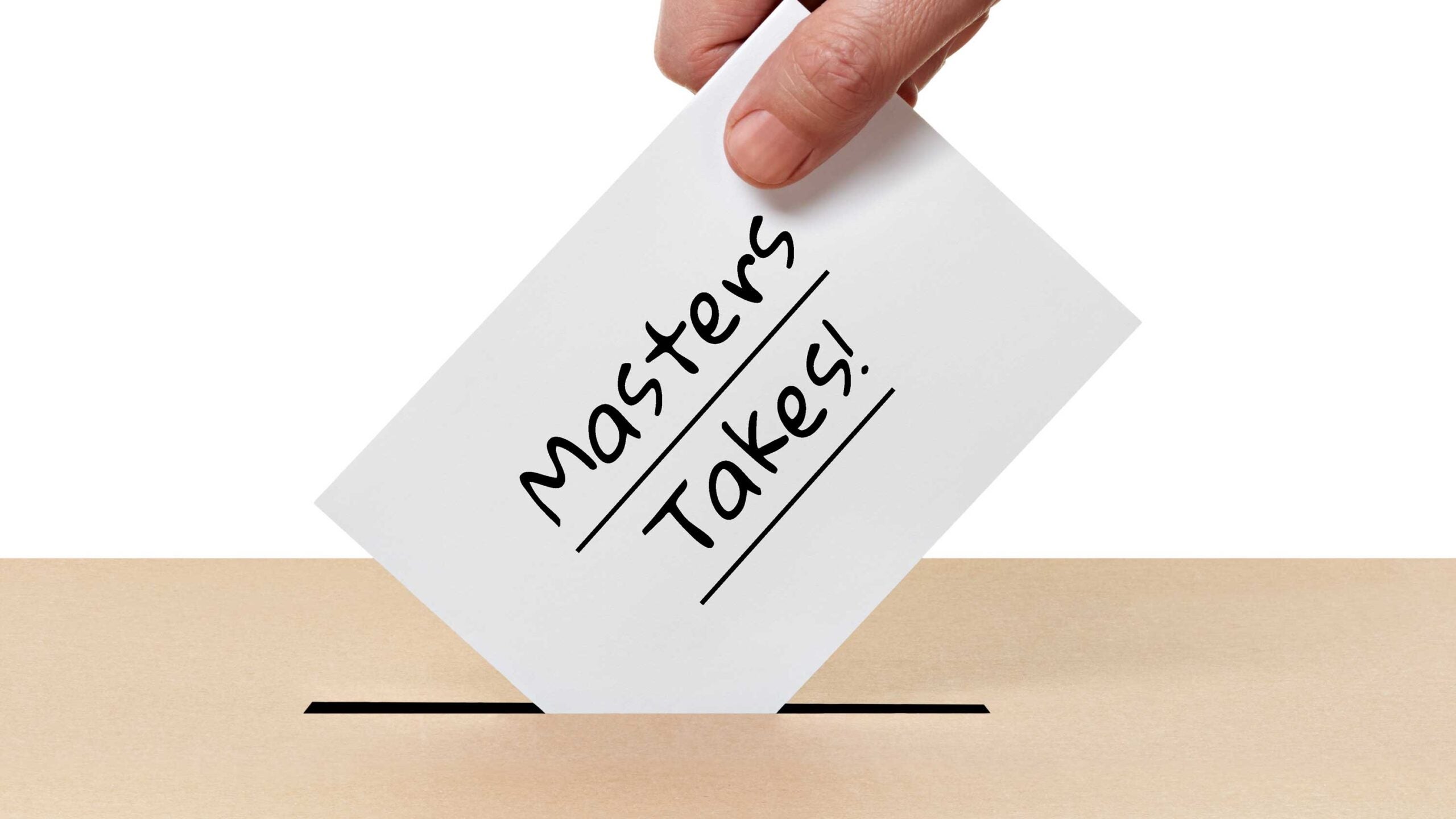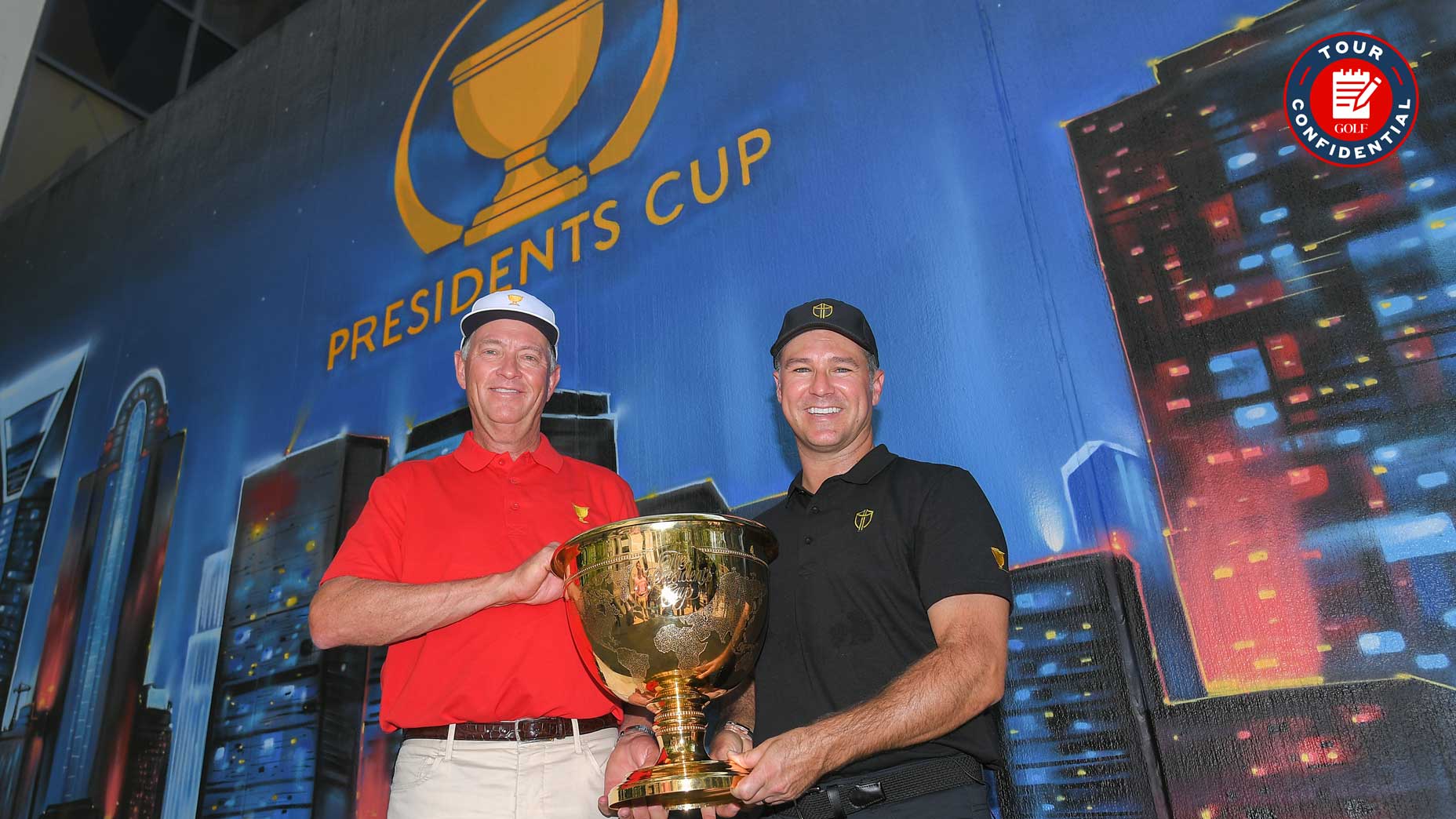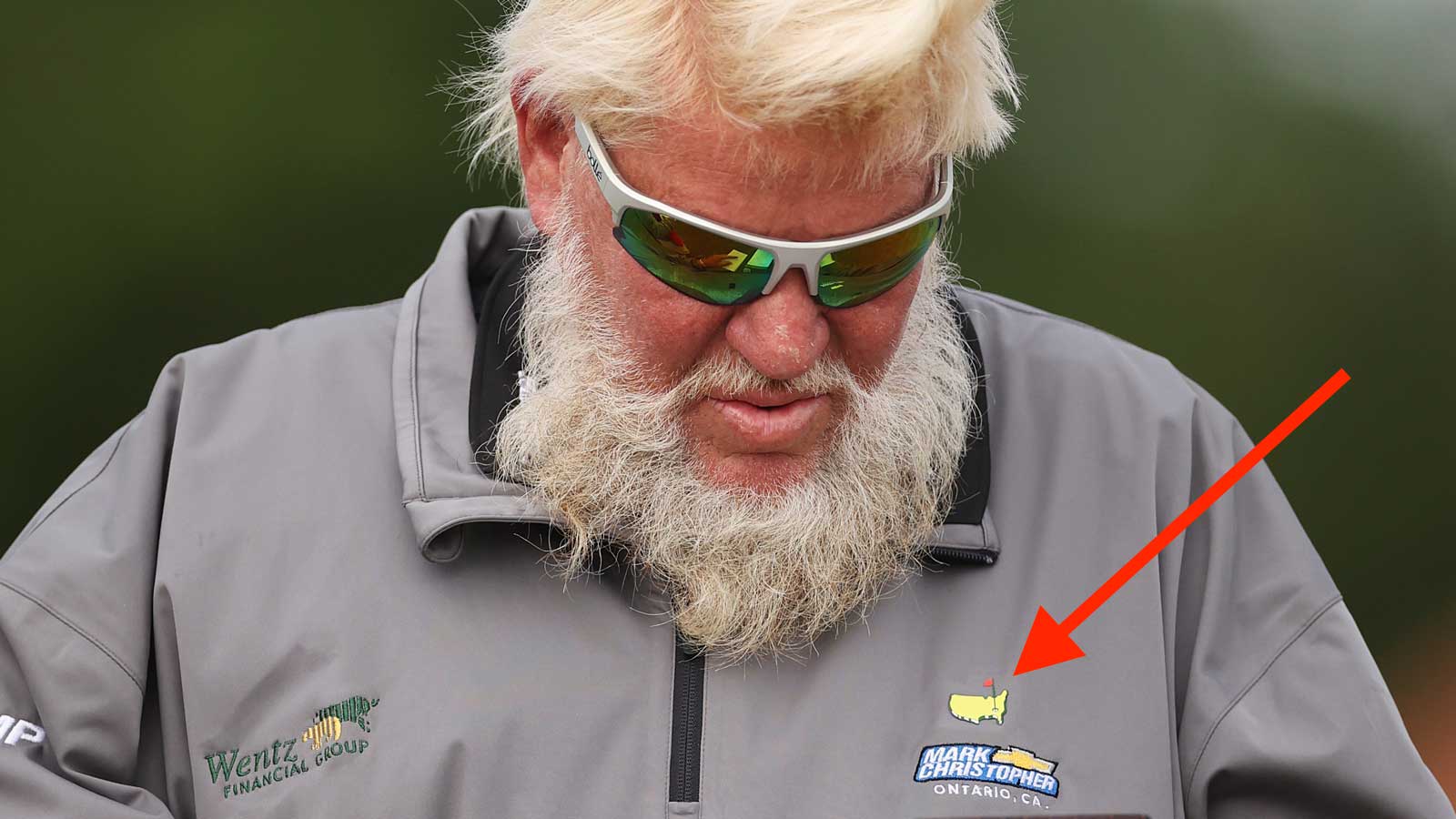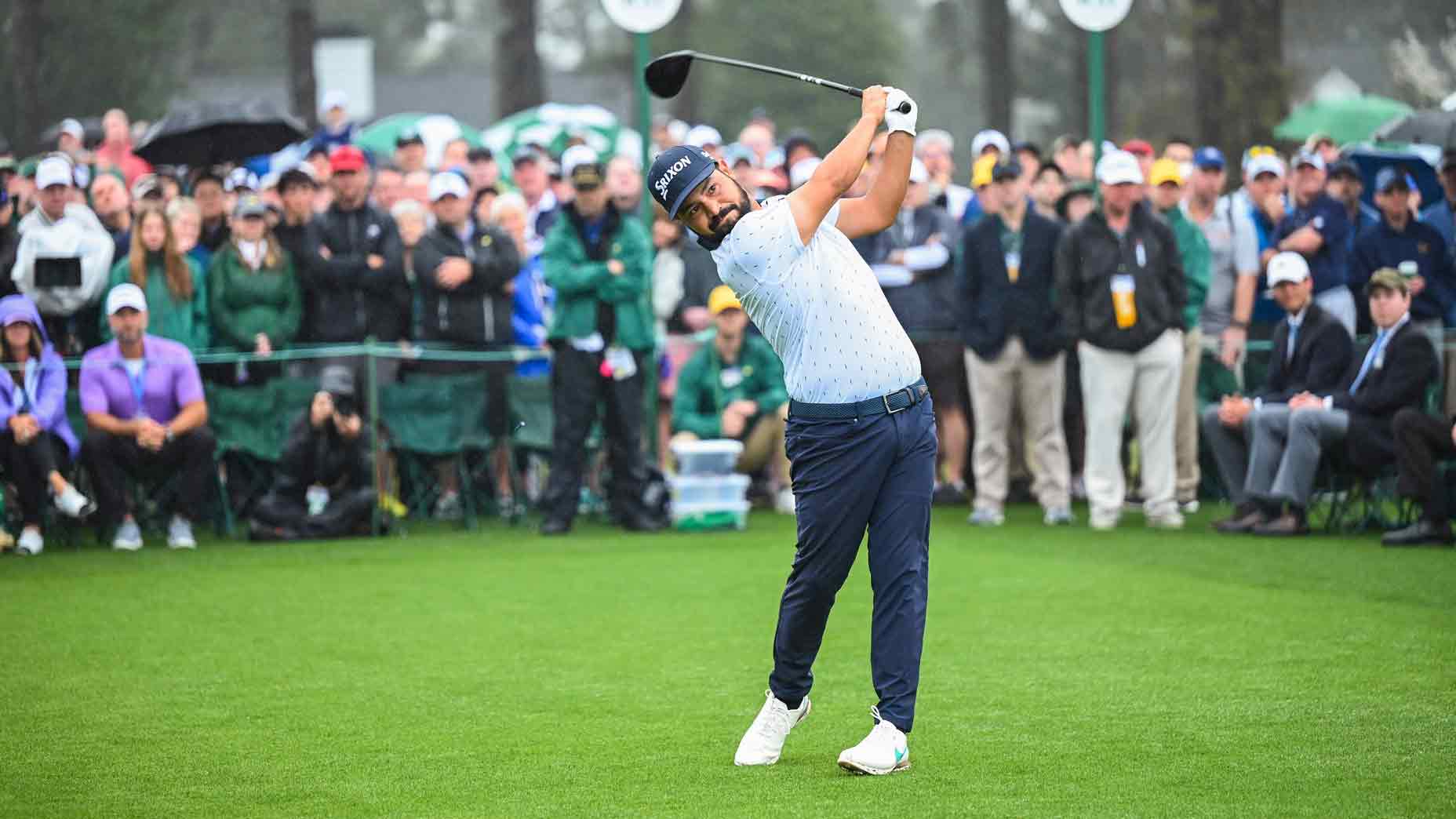GOLF has partnered with CDW and VMware to explore how the world’s best golfers (like Gary Woodland) develop secure game plans for the Masters, plus how data can reveal not only which players are the all-time Masters standouts but also which 2021 Masters competitors are primed to break out. Below, we’re taking a statistical deep dive into the greatest runner-up performances of all time at the Masters …
***
Our number-crunching has already determined the best-ever 72-hole Masters performance: Ray Floyd’s win in 1976, which just pipped Tiger Woods’ 1997 romp. Also popping up on that ranking was a runner-up finish by Ben Hogan in 1942, when he lost to Byron Nelson in a playoff.
That got us thinking about the other best Masters performances by a runner-up: in other words, the players who can legitimately say they played well enough to win the Masters, but were beaten out by a buzzsaw who happened to play even better that given week.
To shape our list, we first computed the average margin that Masters winners finish ahead of the field 72-hole scoring average for that week. That number, across all 84 editions of the Masters, is 12.73 strokes. We then identified any Masters runners-up who beat the field average by more than 12.73 strokes. There are 11 such players.
First, a closer look at Hogan, whose 1942 second-place finish leads the way. The Hawk posted a 280 total that was 15.67 strokes better than the field average (even after the adjustment of a pretend 36-hole cut to make for a better comparison with the post-cut era after 1957) but ended up in an 18-hole playoff with another of the greats of the game, Byron Nelson. Adding to his bad luck, Hogan lost the playoff, 69-70, when Nelson played an eight-hole stretch in six under.
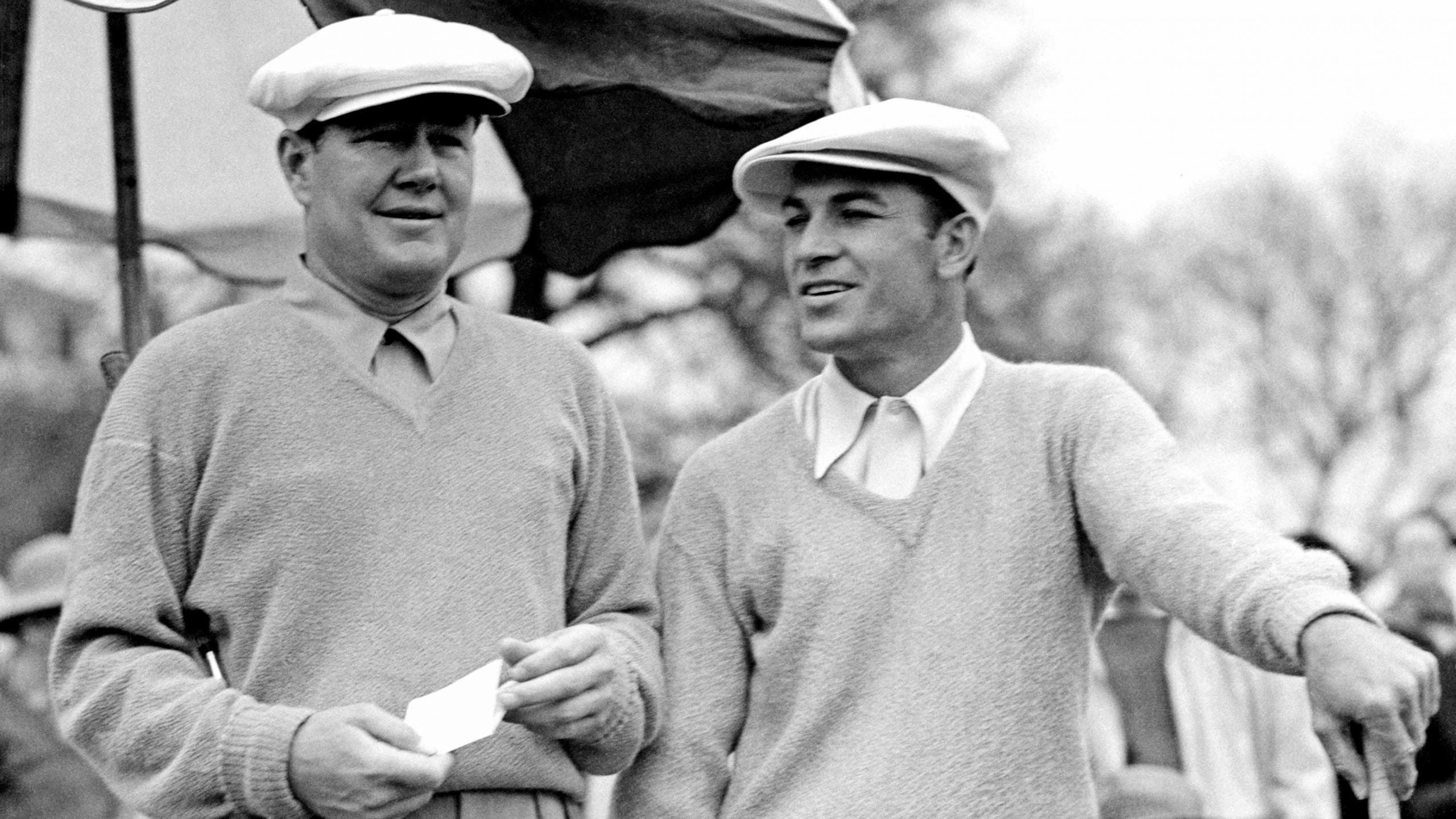
Next on the unlucky loser list is Chris DiMarco. He posted a 276 total in 2005 that was seven strokes clear of everyone else in the field, except for Tiger Woods, who also shot 276. DiMarco’s tally was 14.73 strokes better than the field average. Woods won the sudden-death playoff with a birdie on the first extra hole; DiMarco got a silver medal and a “nice going” for his efforts.
In terms of their performance relative to the field, Hogan played well enough to win all but eight Masters and DiMarco all but 14.
The third best runner-up performance is a bit of a surprise. Ben Crenshaw finished eight strokes behind Floyd in 1976 with a 279 total. But with Floyd finishing an extraordinary 22.22 strokes better than the field average, Crenshaw was still 14.22 strokes better than that average, a showing good enough to win the Masters in 64 other years.
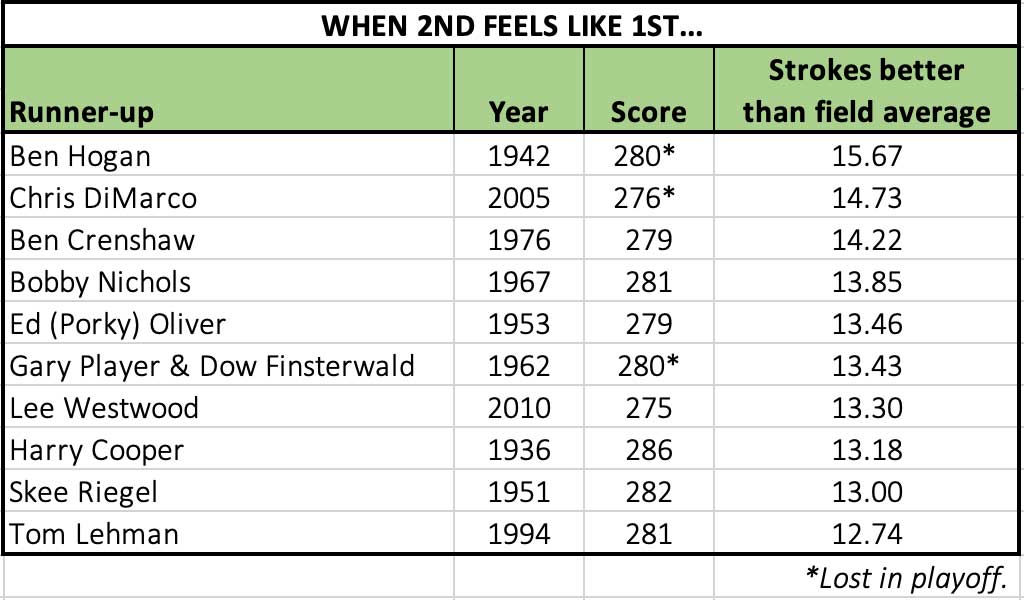
Next up: Bobby Nichols. He and good friend Gay Brewer, a fellow Kentuckian, separated themselves from the field in 1967. Nichols beat the field average by 13.85 strokes, losing by one stroke to a relatively unheralded outstanding performance by Brewer. Ranking fifth among the runners-up is Ed (Porky) Oliver at 13.46 in 1953, five strokes behind Hogan’s then-record 274.
In 1962, Gary Player and Dow Finsterwald both beat the field by 13.43 strokes. So did Arnold Palmer, who beat them in a playoff for one of his four green jackets. Player was deprived of what would have been a successful title defense but went on to finish with three Augusta victories. Finsterwald never won a green jacket (nor did DiMarco, Nichols or Oliver).
An additional four runners-up have done better than 12.73, and none of them ended up ever winning the Masters. They are Lee Westwood: 13.30 in 2010 (Phil Mickelson won); Harry Cooper: 13.18 in 1936 (Horton Smith); Skee Riegel: 13.00 in 1951 (Hogan); and Tom Lehman: 12.74 in 1994 (Jose Maria Olazabal).
David Barrett is the author of the newly released The Story of the Masters: Drama, Joy and Heartbreak at Golf’s Most Iconic Tournament. You may purchase the book here.


